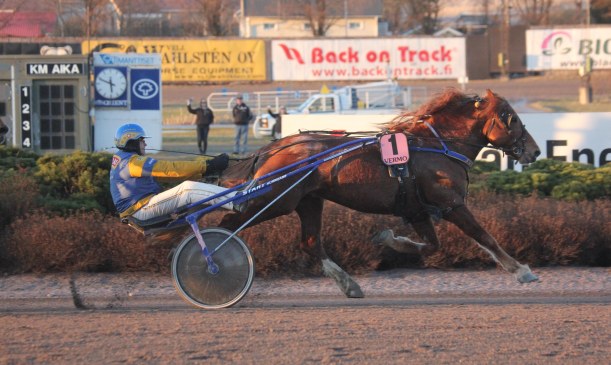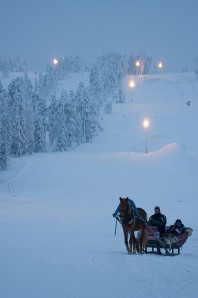
Cute!
I’m in the UK and have had my lovely Finn horse “Sulokas” for five years, I don’t speak Finn but I think his name might mean sweet or cute? We call him Luke for short. Luke found me quite by accident but since that time I have come to love this strong and reliable horse. Having read about the Finn horse Luke seems quite true to the breed being strong, willing and easy to keep.
How did Luke find me? Well, I have always loved horses but didn’t own one until I was nearly 30yrs old, I bought t two lovely ponies, both British native cross bred, they served my three children and I well and stayed with us until we lost them both to old age, one in 2002, the other in 2004.
At this point the family are all grown up and left home so I thought; maybe we should have a break from keeping horses, I can honestly say that for the next five years I missed having horses everyday.
As I approached my fiftieth birthday, I told my husband that I desperately wanted horses again…he groaned!! but the search began and in June 2009 my birthday present arrived… no, not my lovely Finn horse but a beautiful Belgian draught called Major, I was so happy but then devastated to later find that Major had a very bad heart murmur, after much deliberation and advice from my vet (and my husband) I decided that the risks attached to keeping Major were too great and he was returned to the dealer, I was so upset. (But don’t worry it’s was a happy ending for Major too!)

Getting ready for a summer charity ride
I don’t know how Luke came to be in the UK, all I was told was that he had been a resident at a regional equestrian college which had closed, then sold to a lady who didn’t keep him long and was being returned to the dealer who had sold me Major. At 15.3hds and 13yrs old I decided he could be for me, the breed meant nothing to me and I didn’t think to read up about them before making a decision, most of all I wanted something safe, I tried him out, really liked him and so Luke and I began a journey into friendship.
Like all friendships it has taken time and we have had a few mishaps, I was unfit and not too confident with my riding at this time, I was surprised at Luke’s fast paces and how much ground he could cover so effortlessly, he was a bit nervous too, especially when I lost my balance a few times and fell off! I discovered his loathing for sheep, cows and pigs and didn’t have much strength to stay on when he spooked to try to avoid them! There were times when I wondered if I should keep Luke but I just knew that this horse was worth sticking with and I’m so glad I did, we have had such fun together.
“The breed meant nothing to me and I didn’t think to read up
about them before making a decision,
most of all I wanted something safe,
I tried him out, really liked him and so
Luke and I began a journey into friendship.”
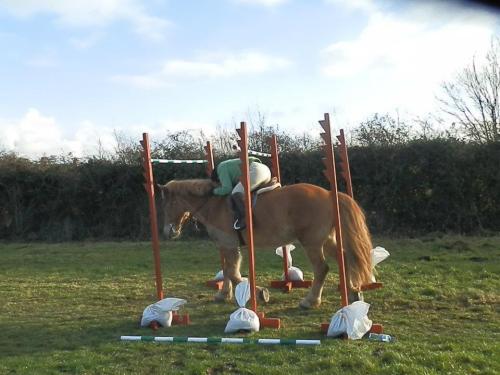
Le Trec for the first time!

Le Trec for the first time!
Luke tries hard at everything I ask him to do, he was the star of the Le Trec class; when everyone thought I was being brave, I knew it was the strength and willingness of Luke giving me the confidence to take part.

Cross country at Horse Shoe Farm Norfolk
I didn’t think I would ever be able to tackle even small cross country jumps but, as you can see, Luke splashed through the water jump like a professional; this was especially brave when you consider that generally Luke does not like getting his feet wet!
Most of the time Luke and I prefer to just hack out with friends, he has gained himself a reputation for being brave and he forges ahead through hedges and over rough ground, when approaching some difficult terrain out on a hack my friends say, “Luke will go first!”.
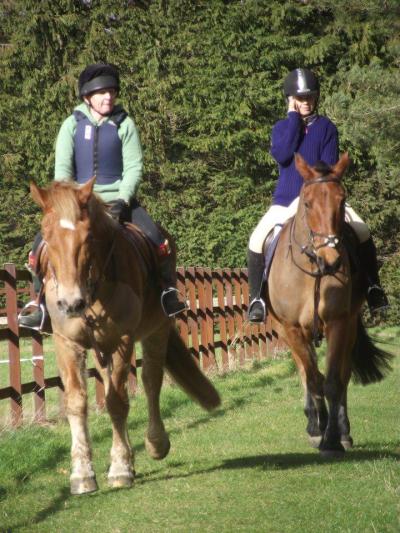
Riding out with Lorna & Rex was such fun!
A while ago, when hacking with my friend Lorna, we stumbled on a patch of soft ground which I hadn’t noticed , poor Luke sank above his knees (all four legs) in soft sand like soil, he didn’t panic, he steadied himself and with enormous effort and strength lunged forward and out of the hole with me still in the saddle! Lorna was wide eyed and astounded that Luke had reacted so calmly and had the strength to get us both out of this muddle, testament to the strength and willingness of this wonderful breed I think.
“He has gained himself a reputation for being brave
and he forges ahead through hedges and over rough ground,
when approaching some difficult terrain out on a hack my friends say,
‘Luke will go first!’”.

Luke with baby Summer
Luke is the kindest of horses and loves to be daddy to the babies or smaller ones protecting them from the others if necessary, when he was in livery it was lovely to watch him look after the smaller more timid ones in the field, he would immediately latch on to them and was a very loyal friend to them.
I knew nothing about the Finn horse before owning Luke and have been fascinated to learn about their history and the many things they get up to in Finland (thank you Viivi for your lovely blog).
I think the Finn horse deserves to be recognised more widely, especially in the UK. In my experience most people in the UK do not know about the Finn horse, when they see Luke they comment on his large head and think he is a Suffolk Punch type (mainly because of his colour and size – see Suffolk Punch Horses)
I only know of one other Finn horse in the UK and have not met anyone else in the UK who knows about this breed, people don’t realise how strong, reliable, kind, loyal and willing the Finn horse is, I really hope I can do something to change that and would love to hear from anyone else who has or knows of a Finn horse in the UK. I am definitely now a Finn horse fan and hope I can help to make sure that others in the UK are more aware of this lovely breed so they might become fans too.
I hope you have enjoyed reading about Luke!
Just before I go; Major the Belgian draft reverted out of his heart murmur and found a lovely new home, I was so pleased to get photos of him and know that he is happy.
I have not been to Finland yet but I really do hope to visit in the future.
Mandy Hunt (UK) , hunt@may6056.orangehome.co.uk








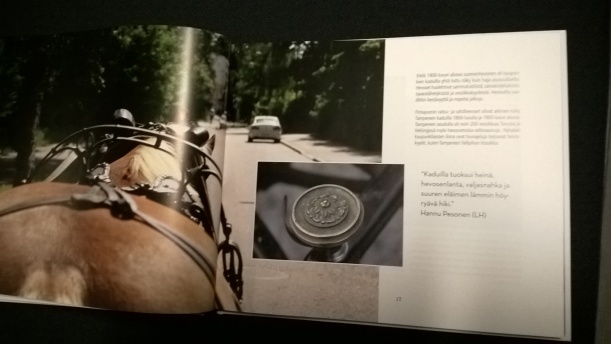






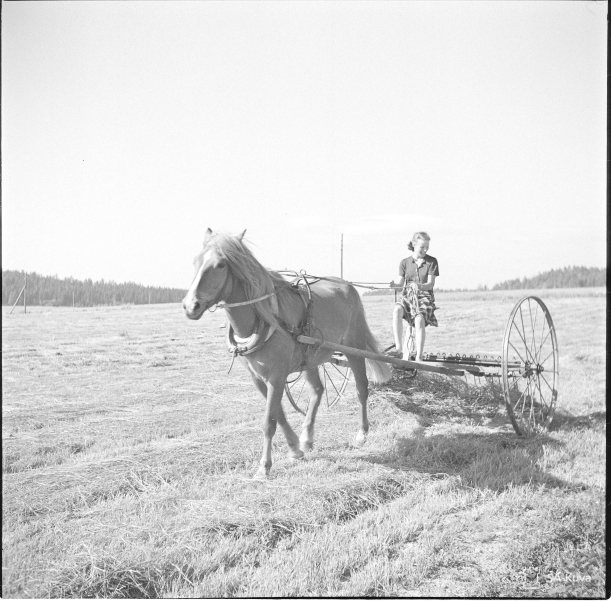



 Today we celebrate the Finnhorse day, the day to honor our one and only Finnish horse breed with waving flags. The studbook for the Finnhorse was founded 6th of September 1907, so our horse has been documented for 108 years and about ten generations now. This is already the ninth official “Finnhorse day” when we raise our flags and carry a few extra carrots to the barn. ;)
Today we celebrate the Finnhorse day, the day to honor our one and only Finnish horse breed with waving flags. The studbook for the Finnhorse was founded 6th of September 1907, so our horse has been documented for 108 years and about ten generations now. This is already the ninth official “Finnhorse day” when we raise our flags and carry a few extra carrots to the barn. ;)